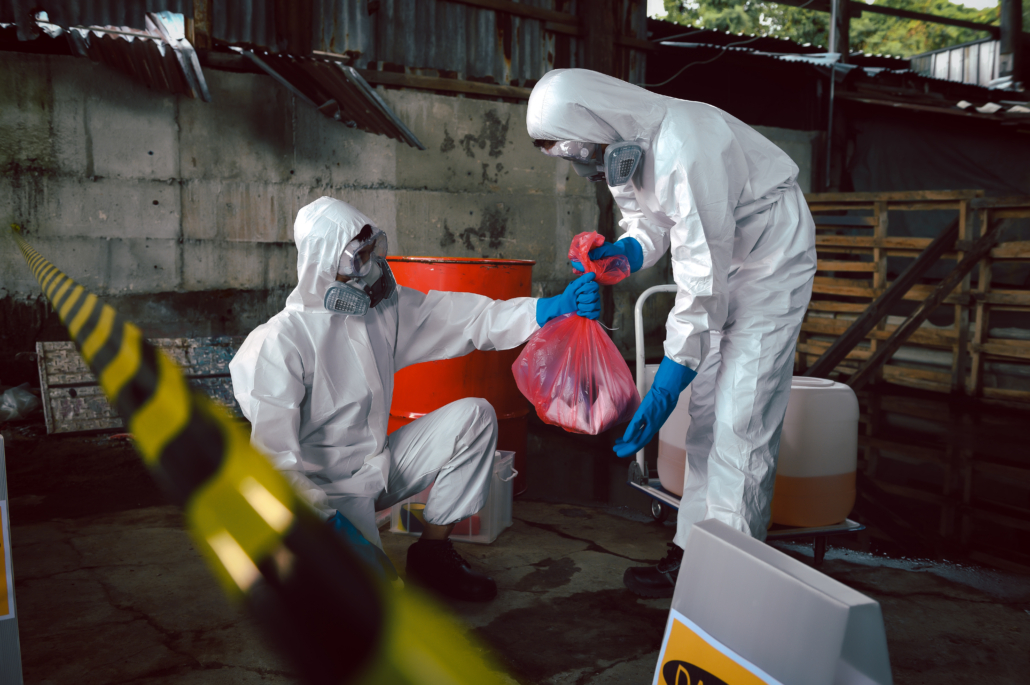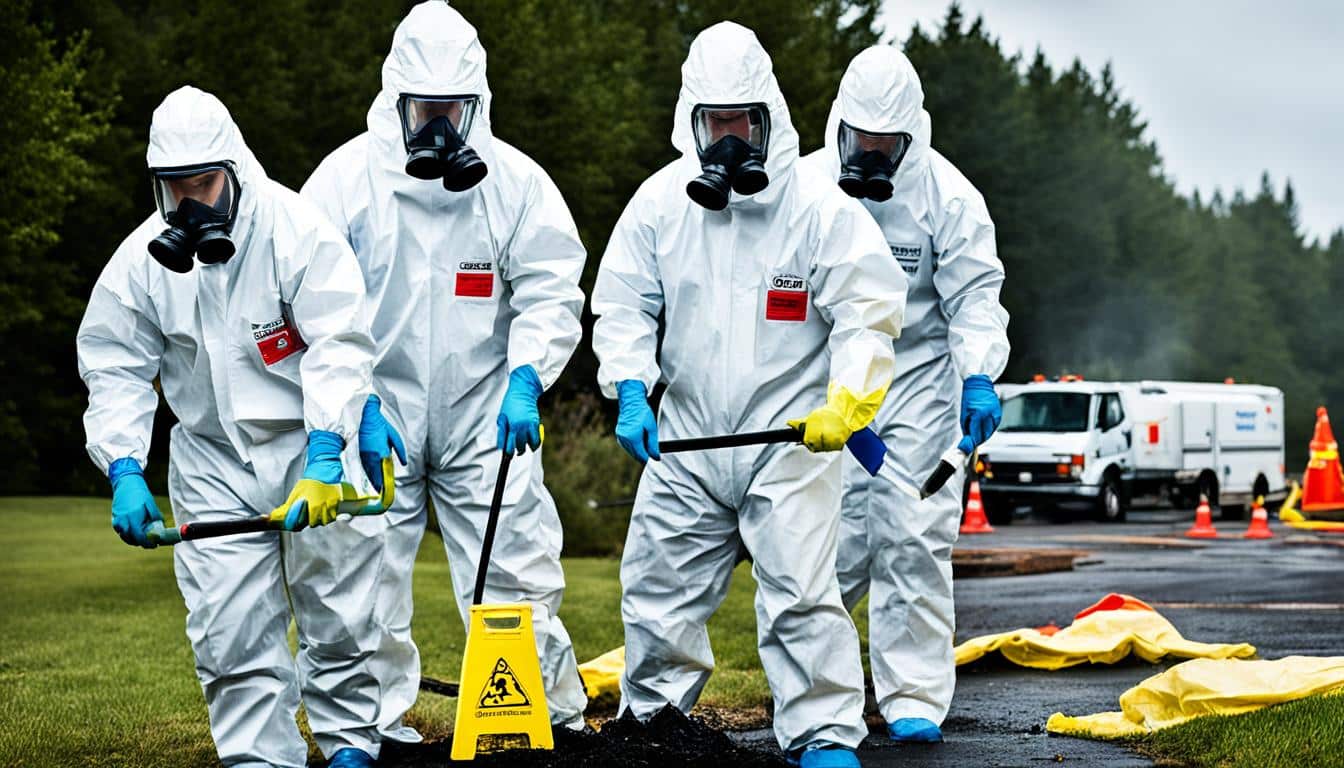Biohazard Removal: Safe Handling and Disposal of Hazardous Products
Biohazard Removal: Safe Handling and Disposal of Hazardous Products
Blog Article
Professional Biohazard Cleaning and Purification for Blood, Bodily Fluids, and Hazardous Materials
The potential wellness risks associated with direct exposure to biohazards emphasize the important requirement for thorough handling and detailed clean-up. As we navigate the detailed landscape of biohazard cleaning, comprehending the nuances of laws, compliance, and the customized devices at play ends up being critical in making sure a detailed and safe decontamination procedure.
Wellness Dangers of Biohazard Exposure
Exposure to biohazards presents considerable health and wellness threats that can cause severe consequences for areas and people alike. Biohazards encompass a vast array of organic compounds, including blood, bodily fluids, mold and mildew, microorganisms, viruses, and various other potentially contagious products. When individuals enter into contact with these biohazards, whether through accidents, incorrect handling, or ecological direct exposure, they face the danger of having serious ailments or diseases.
One of the key wellness dangers associated with biohazard direct exposure is the transmission of infectious conditions. Bloodborne pathogens such as HIV, liver disease B and C, and different microorganisms can be present in biohazardous products, posing a direct risk to human health. Inhaling airborne biohazards like mold and mildew spores or entering into call with infected surface areas can likewise result in respiratory problems, allergies, and other damaging health results.
Moreover, biohazard exposure can have long-term health and wellness ramifications, with some illness materializing years after the first call (Blood Cleanup). Therefore, it is critical to prioritize correct biohazard cleansing and decontamination to mitigate these wellness dangers and ensure the security of areas and people

Specialized Educating for Biohazard Cleanup
When it pertains to managing biohazard clean-up effectively and safely, specialized training plays an essential duty in making sure correct decontamination treatments are followed. Biohazard cleanup requires certain understanding and abilities to effectively alleviate threats associated with bloodborne microorganisms, physical fluids, and dangerous materials. Experts learnt biohazard cleaning go through extensive instruction on just how to securely manage, remove, and dispose of biohazardous products to stop contamination and exposure.
Specialized training for biohazard clean-up covers a series of vital topics, including appropriate personal protective equipment (PPE) usage, bloodborne pathogen awareness, purification techniques, and hazardous waste disposal methods. Individuals learnt biohazard cleaning are geared up with the essential knowledge to evaluate contamination levels, determine possible dangers, and apply appropriate clean-up procedures in conformity with regulative requirements.
Continual training and education are paramount in the area of biohazard cleanup to stay updated on the most recent decontamination modern technologies, security procedures, and laws. By buying specialized training, biohazard cleaning specialists can properly react to emergency situation cleaning circumstances and guard both public health and wellness and the environment.
Importance of Correct Purification Techniques
Making use of appropriate purification methods is crucial in biohazard cleanup to properly get rid of hazardous materials and lessen health and wellness threats. Efficient decontamination not only makes certain the elimination of visible traces of blood, bodily fluids, and other biohazards however likewise targets undetectable pathogens that might pose serious health and wellness hazards if not correctly removed. By following stringent decontamination methods, educated professionals can significantly lower the threat of direct exposure to dangerous bacteria, infections, and microorganisms that might cause infections or illness.
Appropriate decontamination techniques involve using customized equipment and disinfectants that are particularly developed to reduce the effects of biohazards effectively. Thorough cleansing and sanitation of contaminated areas are necessary to protect against the spread of pathogens and guarantee a secure atmosphere for residents. why not find out more Furthermore, the right disposal of biohazardous waste complying with purification treatments is important in avoiding contamination of various other surface areas or people.

Equipment and Tools for Safe Cleaning
The proper devices and devices play a vital role in making certain the effective and risk-free clean-up of biohazardous materials. When handling blood, bodily liquids, or harmful materials, biohazard cleansing professionals rely on specialized equipment to minimize direct exposure dangers and completely sanitize the affected area. Individual safety devices (PPE) such as gloves, masks, goggles, and coveralls are necessary to secure against straight contact with possibly contagious products. Furthermore, biohazard cleansing kits having anti-bacterials, absorbent products, and biohazard bags are used to securely get rid of and include of contaminated products. Blood Cleanup.
Advanced cleaning devices next like hospital-grade anti-bacterials, HEPA-filtered vacuums, and fogging machines are employed to sanitize surfaces and get rid of biohazards successfully. Specialized devices such as sharps containers and biohazard garbage disposal containers are used to securely manage sharp objects and biohazardous waste products. By making use of the appropriate devices and tools, biohazard cleaning experts can guarantee a detailed cleaning procedure that prioritizes security and reduces health threats for both workers and residents of the affected room.
Laws and Compliance in Biohazard Cleansing
Correct adherence to guidelines and compliance criteria is vital in biohazard browse around this web-site cleaning to ensure the safety and security of both personnel and the setting. Federal government agencies such as OSHA (Occupational Security and Wellness Administration) and the EPA (Epa) have established specific guidelines for biohazard cleaning procedures to lessen health dangers and ecological contamination. These guidelines cover a series of elements consisting of the handling, transport, and disposal of biohazardous materials, in addition to the needed training and safety tools required for employees associated with the cleanup process.
Biohazard cleaning firms have to remain up-to-date with these policies to guarantee that their operations fulfill the needed security requirements. Failure to abide by these guidelines can result in serious effects, including penalties, lawsuit, and threatening the health of individuals and the setting. By complying with stringent regulations and conformity measures, biohazard cleansing business can properly alleviate risks and guarantee a secure and comprehensive cleaning procedure for all celebrations entailed.
Final Thought
In final thought, biohazard cleansing and purification call for specialized training, proper techniques, and adherence to policies. Exposure to blood, physical liquids, and hazardous materials positions substantial wellness threats, making it critical to make use of the ideal devices and devices for risk-free cleaning. By adhering to stringent procedures and standards, experts can properly mitigate the risks connected with biohazard direct exposure and make sure the safety of both themselves and others.
As we browse the complex landscape of biohazard cleanup, understanding the nuances of policies, conformity, and the specialized equipment at play becomes imperative in ensuring a thorough and risk-free purification procedure. (Blood Cleanup)
When it comes to dealing with biohazard clean-up effectively and securely, specialized training plays a basic function in ensuring proper purification procedures are adhered to.Making use of proper purification methods is critical in biohazard clean-up to effectively reduce and get rid of hazardous materials wellness risks. In addition, biohazard cleansing packages consisting of disinfectants, absorbent products, and biohazard bags are made use of to securely have and dispose of contaminated products.
Government agencies such as OSHA (Occupational Safety And Security and Health Management) and the EPA (Environmental Defense Firm) have established specific guidelines for biohazard cleanup treatments to reduce wellness risks and environmental contamination.
Report this page